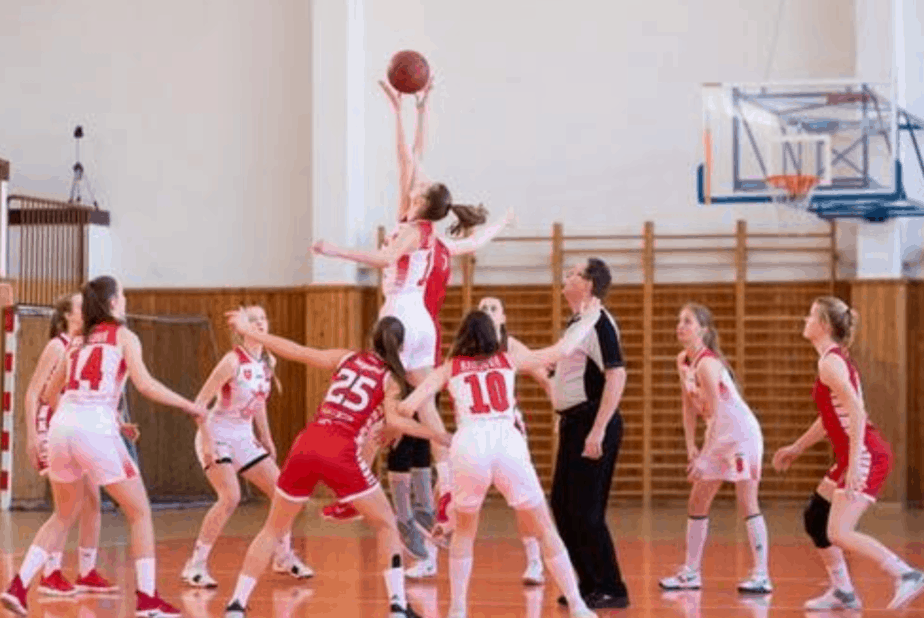How to Help Your Kid Get a Sports Scholarship
Does your teen love sports? Are you looking for a way to pay for college? A year of tuition at a state school averages $20,092 and, at a private school, $45,385; more than 70 percent of students graduate with student loan debt, and the average graduate carries $37,172 into their post-graduate or professional career. With that kind of money on the line, it’s understandable that many students and their parents hope to offset, or completely eliminate, the cost of school with an athletic scholarship.
But how do you get a sports scholarship, and are they really that easy to get? You might be surprised to learn that full-ride athletic scholarships are rare, but many student athletes get rewarded for their skills with at least a partial scholarship. If you want to help your child earn one, you need to get started early, seek out opportunities to network with recruiters, and encourage your son or daughter to diversify athletically and keep his or her grades high. This is a partnered post about helping your teen get a sports scholarship.

Start Freshman Year
As soon as your student starts high school, the countdown starts toward preparing for college, with or without an academic scholarship. If your child has fostered an interest in sports and hopes to play in college, freshman year of high school is the time to get serious about working towards that goal.
Once your student starts high school, it’s time for him or her to start honing his or her skills in a specialty sport. Ideally, your student will have started specializing in a sport even before high school begins. Developing skills in a specialty sport early gives your student more time to get noticed by college recruiters. Recruiters often scout for emerging talent among freshman and sophomore students, and early specialization provides the chance to travel to more away games, with both school and private club teams, and that may mean getting seen by more recruiters.
Play More than One Sport
Specializing in a sport is important – it can help your student build the elite skills that Division I (or II or III) recruiters are looking for. But your child should diversify and play two or more sports, for a couple of reasons.
One is that playing a second sport gives your child a mental and physical break from the demands of the primary sport. A secondary or even a tertiary sport can give your student the chance to enjoy athletics without the pressure of earning a partial or full scholarship or ultimately building a career in athletics. It helps prevent sports-related injuries, too, which can safeguard your child’s chances of a future in college athletics.
Don’t believe us? Believe the statistics – 222 out of the 253 NFL players chosen in the 2017 draft had played more than one sport in high school. Forty-five percent of those played basketball as a second sport, while 62 percent ran track. At the collegiate level, four out of five students given athletic scholarships at Ohio State have played multiple sports in high school.

Seek Out Coaches and Recruiters
If you’re hoping to get your student an athletic scholarship, it’s not enough to just stay home and wait for recruiters and coaches to notice you. Coaches already have some idea of who they’re interested in recruiting for their teams, and your job is to get your child’s name on some of those lists.
You can do that by reaching out to coaches at the college sports programs your child is interested in. Follow NCAA rules for doing so. Offer a short highlight video of your student’s athletic prowess and a well-written personal profile emphasizing your student’s academic and other extracurricular achievements. Establish contact during your freshman year, and send updates as your student’s skills improve.
Your child should also seek to form relationships with influencers who can help place him or her into a good college sports program. College sports camps and clinics can be a good way to get face time with such individuals. So can attending a high school known for helping kids get into good college sports programs. If you’re open to sending your child to a private high school, find one with a strong athletics program and a good track record of launching graduates into collegiate and professional sports careers. For example, if your daughter really wants to play in the WNBA someday, look into basketball prep schools with strong women’s basketball programs. Such a school could be a game changer, especially if your student wants to go as far as possible in a competitive sport.
Keep Your Grades Up
Recruiters at many schools aren’t just looking for strong athletes – they also want great students. If two students with similar athletic abilities are competing for a coveted spot in an elite sports program, the one with the better grades will get it. And, while Division I athletes may receive partial or full-ride scholarships, Division II and III programs may not have the money for that. Students hoping to get into these programs may be offered academic scholarships instead – if their grades are good enough.
Getting your student an athletics scholarship can be a great way to pay for college, but it takes a lot of hard work, long-term planning, and networking. In the long run, though, it can be worth it for your student to graduate with little or no debt – or to enjoy a fulfilling and lucrative career in professional sports.